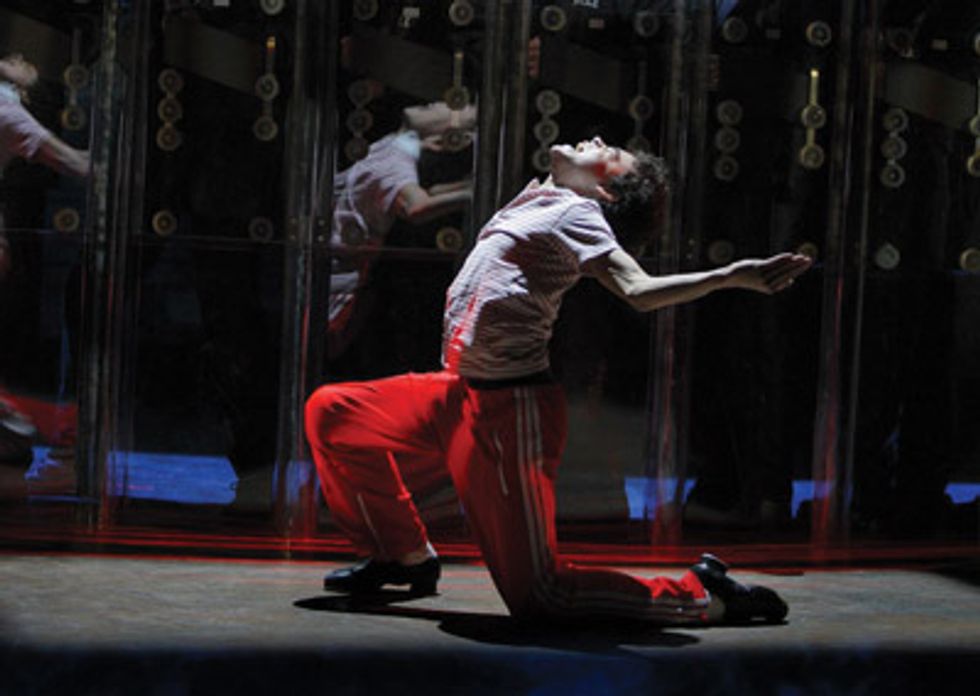Tap for Non-Tappers
When 12-year-old David Alvarez walked into an audition for the original Broadway production of Billy Elliot, he was shocked to see other dancers practicing their tap routines. A student at The Jacqueline Kennedy Onassis School at American Ballet Theatre, his only training was in classical ballet. “I had no idea what to do!” David, now 18, recalls. “I didn’t even know how to pretend to tap. I had to borrow another kid’s tap shoes.” But when he picked up the exercises quickly, the producers took a chance on the young ballet dancer. David went on to play the musical’s title role for more than a year. And he won a Tony Award for best actor!
David’s audition experience isn’t unusual. Many dancers are proficient in other styles but have little or no tap experience, and are nervous about having to tap at a musical theater audition. DS talked to some of the industry’s leading professionals for simple strategies and steps you can learn to make the tap audition process a little smoother.
Learn The Basics
Faking it till you make it is one thing, but the best way to learn tap essentials is to sign up for a beginner class. “Tap isn’t a discipline that can be faked well, because it’s a specialty,” explains director, performer and Tony-nominated choreographer Randy Skinner. But he also says that most Broadway tap choreography is relatively simple. “In some shows, there’s just one tap number, and in a routine with a large group of people, there’s more clarity of sound with basic steps.”
Skinner says the steps taught at an audition are often the fundamentals of the tap routine that will be in the show, so seeing a show before the audition is helpful. When he choreographed the Broadway revival of 42nd Street in 2001, much of the audition included time steps, which begin the show’s famous opening number.
Fake the Rest
The rest of the body can be just as important as the feet. Justin Greer, dance captain for the current Broadway revival of Anything Goes, says there are three key elements to notice when learning choreography: the shape of the steps, weight changes and body angles. “You can look like you’re doing the steps correctly if you do all the upper body movement confidently and change your weight at the right times,” he says. “If you perform and look like you’re enjoying yourself, people won’t be looking at your feet!”

Sutton Foster and company in Anything Goes (by Joan Marcus)Sutton Foster and company in “Anything Goes” (Joan Marcus)
Choreographers want to see that you can make their style look good and that you have a natural sense of rhythm. “Try to imitate the style of the choreographer and his or her assistants, because that style becomes what we call ‘the world of the show,’ ” Greer says. And remember that you’re not just dancing, you’re playing a part. “Sometimes the best technical dancers aren’t necessarily right for the characters in the show.”
Ultimately, when it comes to making it on Broadway, there is no shortcut. “It’s not easy to get into a Broadway show, and the talent pool is becoming more and more skilled and competitive,” Greer says. “You have to be able to do it all—including tap.”
Still, persistence and a positive attitude can pay off. “I got through the tap audition by being open-minded,” David says. “I tried my best, and I didn’t give up.”
Tap at a Glance
Even if you’re a pro at other styles, make sure to have these tap steps down before your next big audition. According to choreographer Randy Skinner, they are the foundation for most tap choreography on Broadway.
1. Flaps & flap ball-change
A flap has two sounds (brush, step), usually repeats successively and can either travel or stay in place. Adding a ball change after each flap is a basic pattern that demonstrates how well you can make sounds and move through space at the same time. At auditions, Skinner likes to use flaps as part of a turn pattern across the floor—like flap, heel—which shows him how well dancers can spot their turns.
2. Rolling shuffles
Shuffles are made up of two sounds with the toe tap—a brush forward and a spank back. To roll your shuffles, alternate between hopping on one foot and shuffling with the other foot. Aim to maintain triplet timing: 1-and-a-2-and-a-3-and-a-4-and-a. “This step shows us your ear for rhythm, so keep it even. Remember that speed is a matter of practice.”
3. Waltz clog & Irish
These two patterns can move or stay in place. The waltz clog combines a flap on one foot with a shuffle ball-change on the opposite foot. “This is done in 3/4 time, which is why it is called a waltz clog.” The Irish is a shuffle on one foot, followed by a hop on the other foot and step on the original foot.
4. Time steps
Time steps are repeating 4-count patterns that alternate between the right foot and the left foot. They consist primarily of hops, steps, shuffles and flap ball-changes. “Know the difference between a single, double and triple time step. A second flap is added to the single to make a double, and then a shuffle is added to make the triple.”
5. Double pullbacks
This advanced step is difficult to master. It involves springing from the floor and making two sounds as you pull (leave the floor), then two sounds as you land on the balls of your feet. The foot making the sound alternates: pull right, pull left, land right, land left. “Each sound must be clear and separate from the others.”




